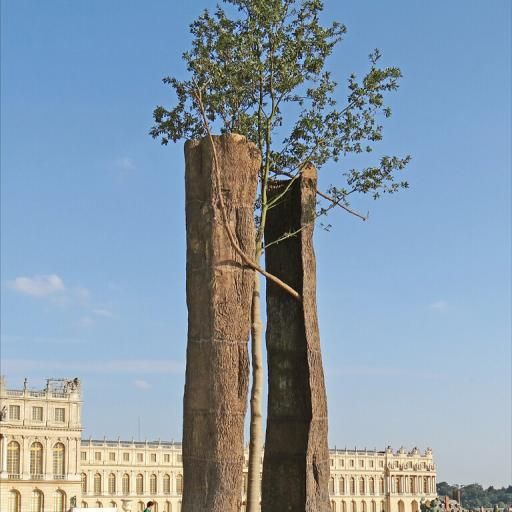
Arte Povera exhibition at the Bourse de Commerce
Categories : Exhibition, published on : 10/24/24
Treat Yourself to a Journey through 1960s Italian Art without Leaving the City of Light! Dive into the world of Arte Povera with an exhibition at the Bourse de Commerce, offering you a chance to explore the radical and profound nature of this modern art movement.
A Journey to the Heart of Arte Povera
Arte Povera, or "poor art," emerged in Italy in the 1960s as a rejection of classical and modernist art conventions. By working with raw, unexpected materials like wood, metal, stone, and everyday objects, Arte Povera artists sought to redefine the boundaries of art. The Bourse de Commerce hosts a collection of 250 pieces, immersing visitors in the philosophy behind this movement. Among the major installations is Giuseppe Penone's striking sculpture Idee di pietra—1532 kg di luce, symbolizing the intersection of nature and art.
An Immersive Visit through the Spaces of the Bourse de Commerce
The visit begins in the Bourse de Commerce's grand hall, where Pier Paolo Calzolari's surprising works, including Senza titolo (Materassi), create a fascinating dialogue between material and emotion. These pieces, made from mattresses and cooling tubes, explore themes of life and inertia—a recurring motif in the movement.
The journey continues in the Rotunda, an area dedicated to monumental works by prominent Arte Povera artists. Iconic pieces include Mario Merz's first igloo, evoking themes of dwelling and nomadism, and Penone's first tree sculpture, an homage to nature’s strength. Alighiero Boetti's constantly bubbling fountain also captivates viewers, adding a dynamic element to the exhibition.
Highlights of Arte Povera Artists on Display
Notable artists like Jannis Kounellis and Michelangelo Pistoletto, pillars of the Arte Povera movement, are showcased prominently. Kounellis' works, incorporating raw materials such as coal and wool, question the place of natural elements in art. On the upper floor, Pistoletto presents his famous mirror paintings, in which spectators themselves become part of the artwork.
Giulio Paolini, Luciano Fabro, Giovanni Anselmo, and Pino Pascali also present pieces that blur the boundaries between culture and nature by incorporating water and other natural elements. Pascali's work, Confluenze (1967), highlights the organic dimension of Arte Povera by featuring water as a central element.
A Unique Journey to Discover Modern Art
Through a partnership between the Pinault Collection and the Castello di Rivoli, the Bourse de Commerce offers a comprehensive retrospective of Arte Povera, enriched by works from prestigious collections. The exhibition concludes on the lower level with a work by Gilberto Zorio, Confine incandescente (1970), an installation symbolizing the tension between energy and matter.
This exhibition is an essential part of Paris’s cultural program and resonates with the city's vibrant art scene, alongside iconic sites like the Museum of Decorative Arts and the Louvre. Whether you are a contemporary art enthusiast or simply curious, the Arte Povera exhibition at the Bourse de Commerce promises an immersive experience in Italian modern art within a magnificent setting.
Step into this unique artistic world, where simple, organic materials come to life, revealing the creative force and enduring legacy of Arte Povera.
Photo ©Jean-Pierre Dalbéra - flickr





